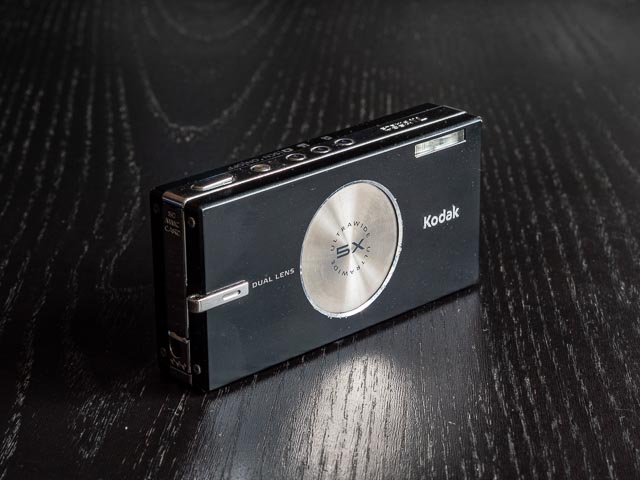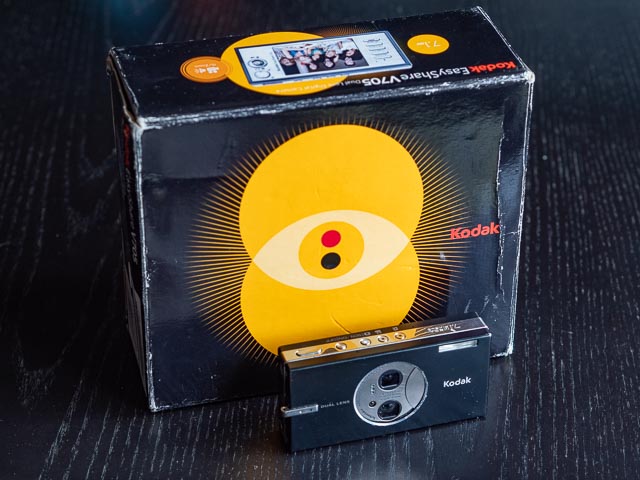Kodak EasyShare V705
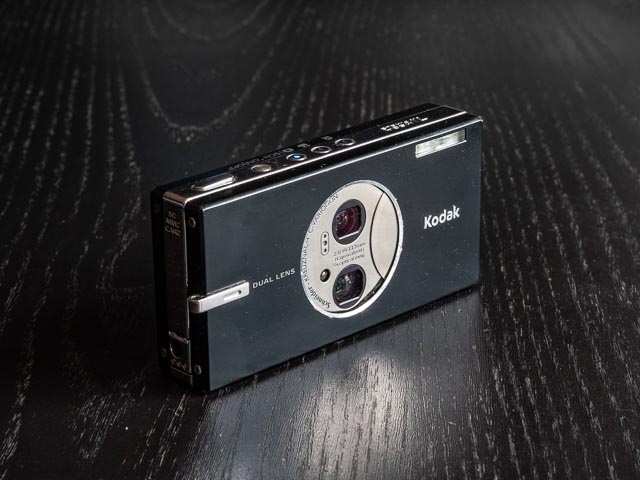
Introduction
| Launch date | August 2006 |
|---|---|
| Camera type | Compact digicam |
| Camera size | 165 grams 101 x 50 x 20 mm (inc. battery) |
| Sensor type | CCD |
| Sensor size | 1/2.5" (5.7 x 4.3 mm) |
| Resolution | 3072 x 2304 (7.1 megapixels) |
| Memory card | SD |
| Battery | KLIC-7001 |
| Lens | Schneider-Kreuznac C-Variogon 3.8mm + 6.4-19.2mm (23mm + 39-117mm 35mm equiv.) |
If you just want to see some photographs, skip straight to the results section.
This is a camera I just had to add to my collection for 2 reasons:
- Firstly, just look at it! It's gorgeous! The design is combination of shapes in their purest form: a perfect black cuboid for the body with a perfect silver circle on the front to contain the lenses. And that is pretty much it: pure, minimalist, geometry. And the lens cover slides out of the way with a satisfying shthwack that speaks of high-quality engineering (as does the mere fact that it's still working nearly 20 years later!).
- The second reason is hinted to above: yes… I said lenses… plural. Kodak gave us two cameras, each with its own lens, combined in one device about 8 years before the same concept became common place in smart phones, which makes it very interesting in terms of the history of digital cameras. Apple, Samsung et al, please express your gratitude to Kodak now


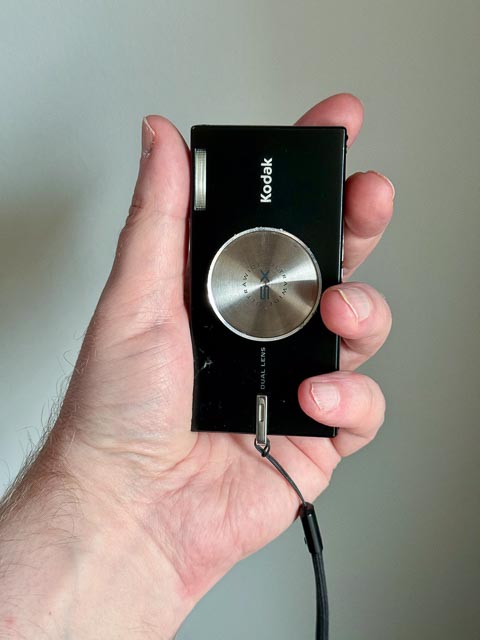 Kodak first launched the V series of cameras using this concept in January 2006 with the Kodak EasyShare V570, which combined 2 5 megapixel cameras, one with a 23mm equiv. wide-angle lens and a second with a 39-117mm equiv. zoom lens. Kodak followed this up with the V610 in April 2006 which upped the megapixel count to 6 and used two zoom lenses: 38-114mm and 130-380mm for an almost unbroken 38-380mm equiv. 10x zoom range. The final camera in the series, the V705 you see here, was launched in August 2006. It's identical to the original V570 except the 5mp sensors have been replaced with 7mp versions. Back in 2006 finding anything wider than a 35mm equiv. of 35mm on a compact digicam was very rare indeed, and the twin camera concept enabled Kodak to do this in a camera which is genuinely tiny, as you can see in this shot of the V705 in my hand. (As this sequence of camera launches demonstrates, this was a time when new digicams were being launched at a rate of approximately 1 every 2.6 seconds
Kodak first launched the V series of cameras using this concept in January 2006 with the Kodak EasyShare V570, which combined 2 5 megapixel cameras, one with a 23mm equiv. wide-angle lens and a second with a 39-117mm equiv. zoom lens. Kodak followed this up with the V610 in April 2006 which upped the megapixel count to 6 and used two zoom lenses: 38-114mm and 130-380mm for an almost unbroken 38-380mm equiv. 10x zoom range. The final camera in the series, the V705 you see here, was launched in August 2006. It's identical to the original V570 except the 5mp sensors have been replaced with 7mp versions. Back in 2006 finding anything wider than a 35mm equiv. of 35mm on a compact digicam was very rare indeed, and the twin camera concept enabled Kodak to do this in a camera which is genuinely tiny, as you can see in this shot of the V705 in my hand. (As this sequence of camera launches demonstrates, this was a time when new digicams were being launched at a rate of approximately 1 every 2.6 seconds  .)
.)
Kodak managed to include at least one real, live, honest-to-goodness zoom lens in all these cameras where as the vast majority of smart phones today stick exclusively to fixed-focal length lenses. The word "zoom" really is hideously over used in the world of smart phones! OK… rant mode off.
Buying a Kodak EasyShare V705 in 2025
This camera doesn't seem to be on many people's radar just yet, so even though it's not particularly common, demand is also not too high. So at the time of writing (August 2025) this camera shouldn't cost too much to buy. I paid £35 on eBay for an example in very nice (though certainly not mint) condition and in full working order, boxed, and complete with all it's accessories.
Using a Kodak EasyShare V705 in 2025
The first think that strikes about this camera is it's size: at only 20mm thick it slides easily into even the slimmest pocket. Like most ultra-compact digicams, the V705 is fully automatic with no manual controls for things like shutter speed and aperture at all. But you can set the ISO manually and set exposure compensation. And you do have access to a wide range of scene modes.
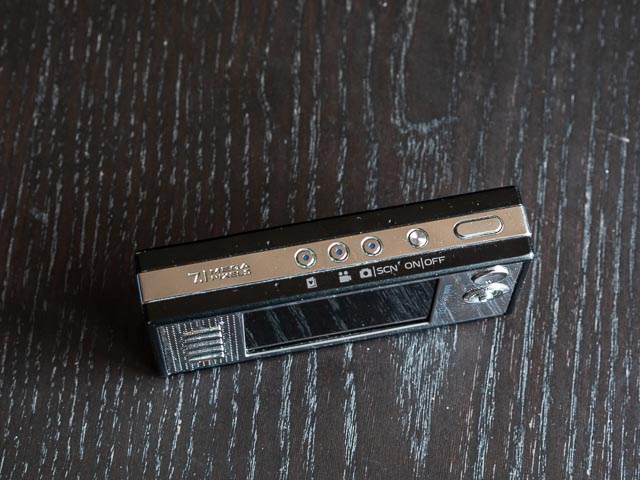 This simplicity makes this camera a very pleasant companion for everyday casual snap-shooting. The only thing that can get confusing are the buttons on the top of the camera. In addition to the shutter button, there are 4 buttons. From left to right as using the camera these are: favourites, movie mode, scene modes and on/off.
This simplicity makes this camera a very pleasant companion for everyday casual snap-shooting. The only thing that can get confusing are the buttons on the top of the camera. In addition to the shutter button, there are 4 buttons. From left to right as using the camera these are: favourites, movie mode, scene modes and on/off.
The favourites buttons lets you mark photos as favourites for easy access in playback mode. It's useful for people who rarely download their photos to a computer and therefore have lots of photos on the camera, but I had little reason to bother with it… so far not very useful, but also not very confusing. But the next three buttons in effect all act as on buttons when the camera is switched off: the movie button always start up the camera in movie mode, and both the scene and on/off buttons will both start up the camera in normal auto mode (so you have to press the scene button again to actually enter scene mode). When the camera is on the on/off button will turn the camera off and the scene and movie buttons with switch to that mode. If you're in a scene mode you actually have to press the scene button again to switch to normal auto mode. Yeah… well… it all works, but I'm not sure I'd call it as intuitive as just switching a camera on and off should be!
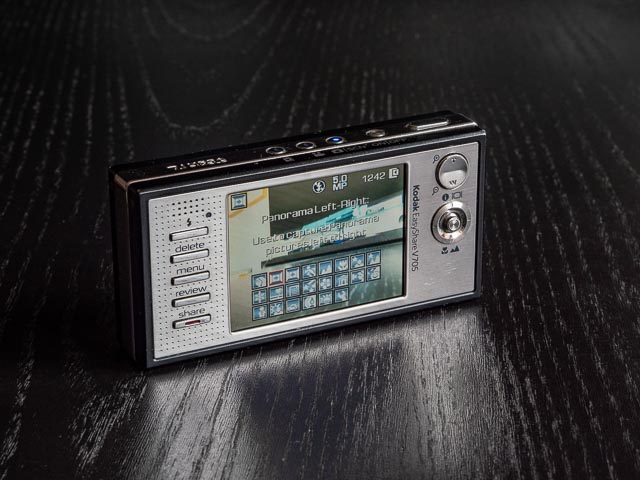 But when you do get to scene mode there is certainly no shortage of scene modes to choose from! But there are confusions here too: for example there is both a macro mode which is very conveniently accessed by hitting down on the handily little joystick on the back of the camera normally used for navigating menus. This button cycles though normal, macro and infinity focussing modes, which is great. But there's also a 'macro' scene mode. I'm not quite sure why you really need both! But I always used the macro mode on the joystick as it's quicker to access.
But when you do get to scene mode there is certainly no shortage of scene modes to choose from! But there are confusions here too: for example there is both a macro mode which is very conveniently accessed by hitting down on the handily little joystick on the back of the camera normally used for navigating menus. This button cycles though normal, macro and infinity focussing modes, which is great. But there's also a 'macro' scene mode. I'm not quite sure why you really need both! But I always used the macro mode on the joystick as it's quicker to access.
In fact the only scene modes I really spent any time experimenting with were the panoramic modes. There are two, one for shooting left-to-right and a 2nd for shooting right-two-left. In these modes the camera superimposes a useful guide on the screen to help you ensure all your shots are lined up. I found the guide rather hard to interpret when I first tried the feature out on a bright sunny day, so I definitely recommend practicing indoors (where the screen is always easy to see) first! But once you get the hang of it, it works pretty well as you can see in this image:

Switching between the 2 cameras can be achieved intuitively using a familiar zoom control on the back of the camera. As you move towards the wide-angle end of the zoom range you will automatically switch to the wide-angle camera at the right time. The camera has two zooming modes which can be selected in the set-up menu: you can either use digital zooming to fill in the gap between the wide end of the zoom lens (39mm equiv.) and the wide-angle lens (23mm equiv.) or you can just jump straight to the wide-angle lens when you zoom past 39mm. Digital zooming, especially on a 20 year old camera, is really not recommended, so I set the camera to just jump to the wide-angle lens, and it worked very well.
There's no doubt that having a wide-angle lens instantly on hand is extremely enjoyable and useful for casual snap-shot style photography! The 1st 3 images in the results section below illustrate the difference between the wide-angle camera, and each end of the zoom camera.
As you might expect of such a slim-line camera, the battery is tiny! It's good for only about 100 shots on the presumably quite old battery that came with my camera. But for me this was still enough for a useful day's casual snap-shooting.
Kodak EasyShare V705 results
Overall I found the results from the V705 were very nice, but there is a very clear and obvious drop off in both sharpness and contrast at the long end of the zoom camera's range, so I quickly leant to stick to the wide-angle camera and the zoom camera at or near the wide end of its zoom range. The results certainly can't match the technical quality of pretty much any modern digital camera and you'll see a few blown highlights on otherwise very nicely exposode images. But for casual snap-shooting the results are good enough and I rather liked the colours and the general look of the images (at least when I stayed away from the telephoto end of the zoom range). I think it will please people looking for that "vintage digicam" look! I was also pleased with the way the images responded to my usual black & white conversion tool, Silver Efex Pro.
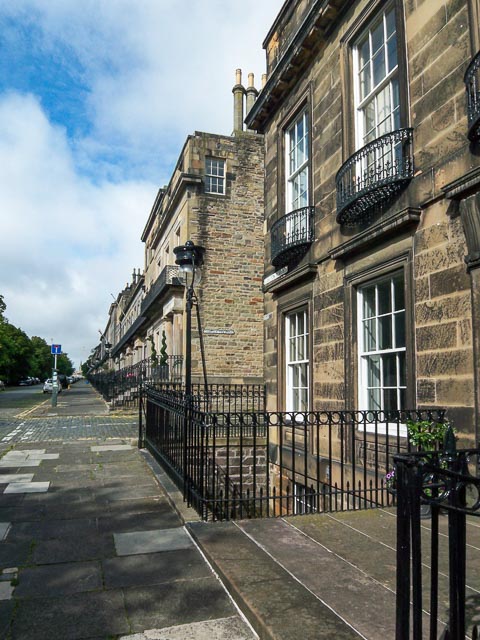
3.8mm - 23mm equiv.
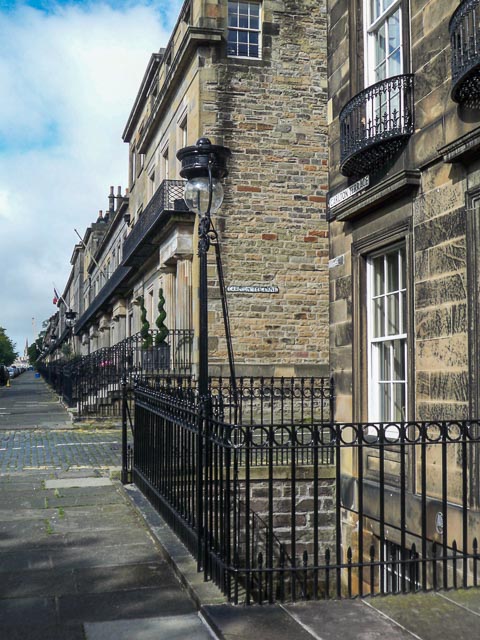
6.4mm - 39mm equiv.
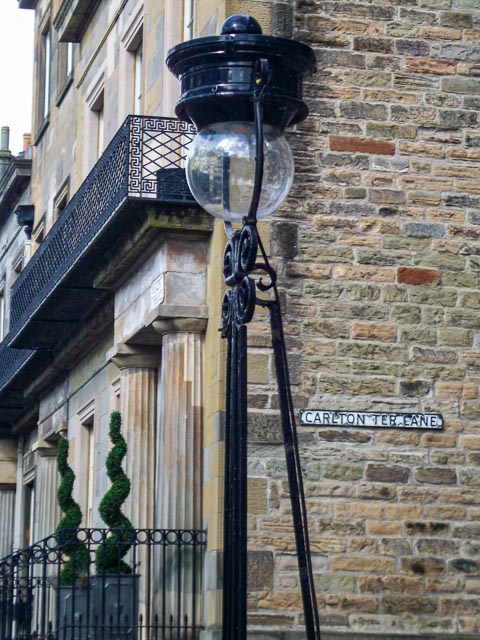
19.2mm - 117mm equiv.
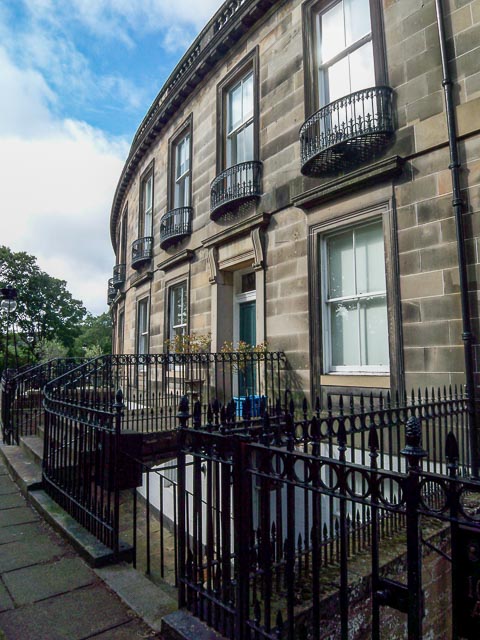
3.8mm - 23mm equiv.
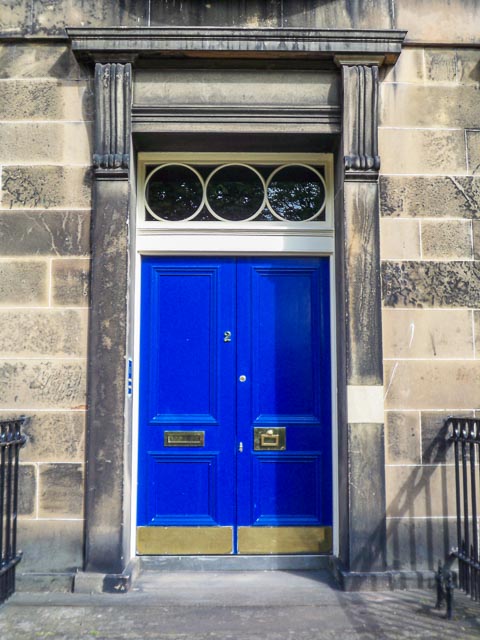
6.4mm - 39mm equiv.
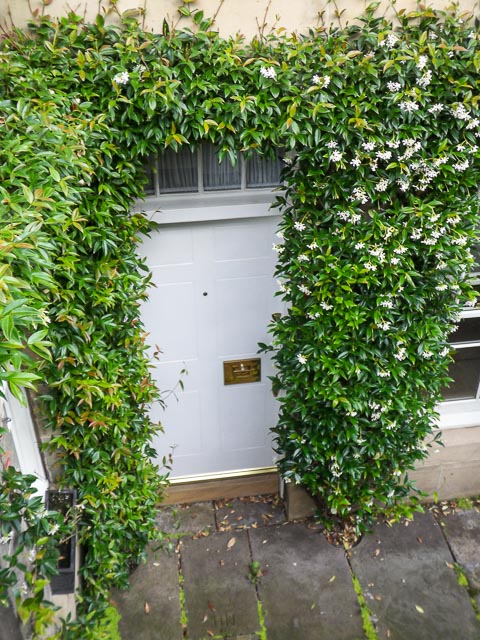
6.4mm - 39mm equiv.
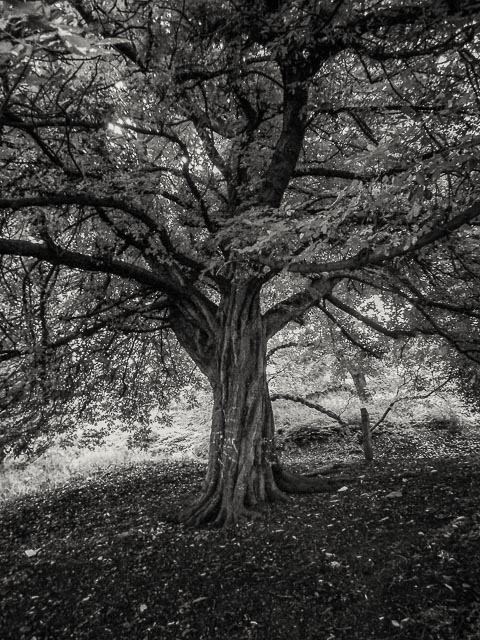
3.8mm - 23mm equiv.
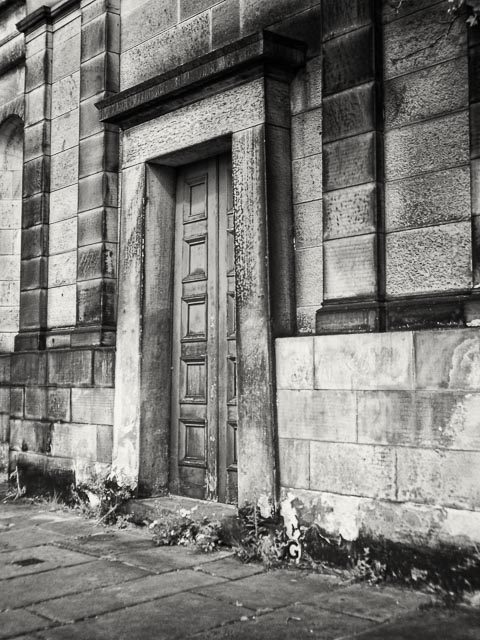
8mm - 49mm equiv.
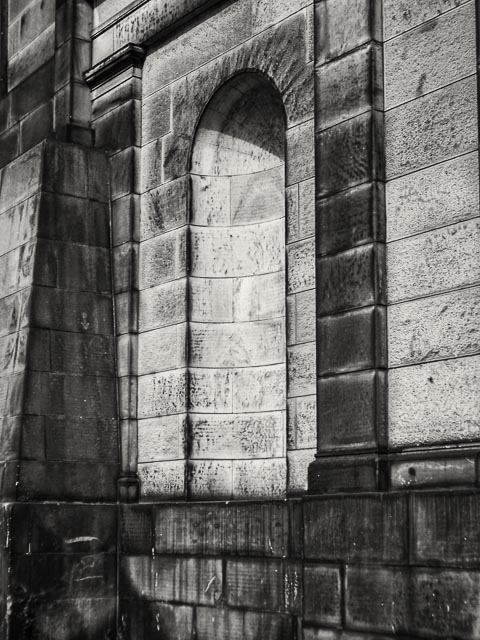
9.9mm - 61mm equiv.
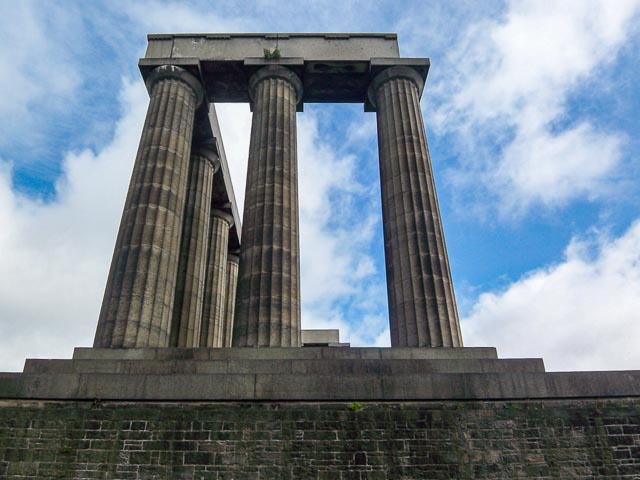
3.8mm - 23mm equiv.
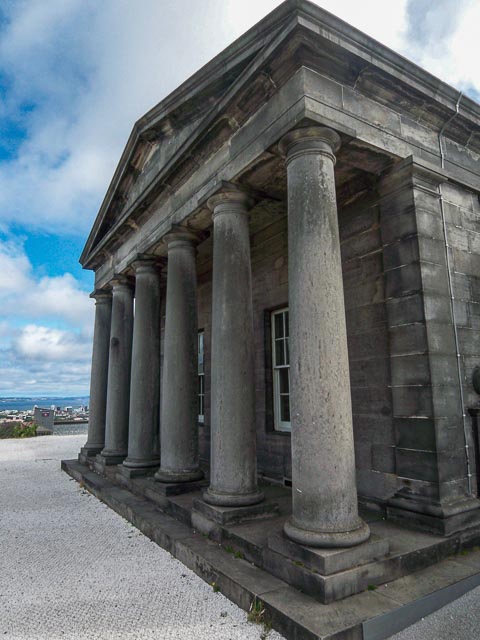
3.8mm - 23mm equiv.
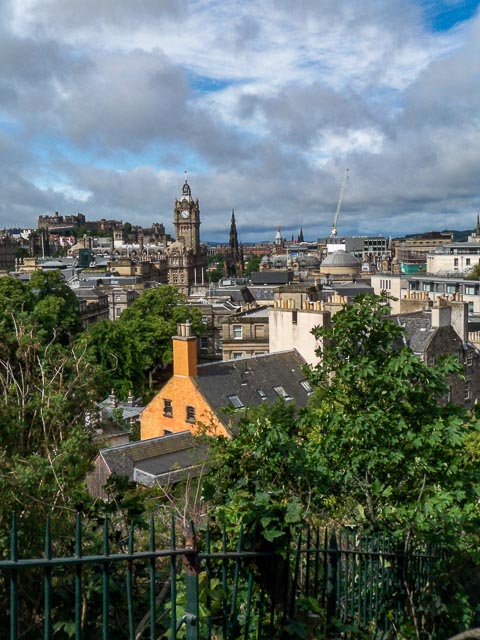
6.4mm - 39mm equiv.
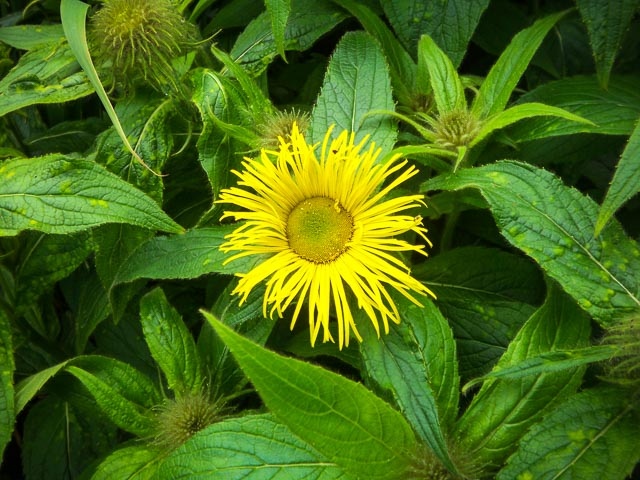
6.4mm - 39mm equiv.
Kodak EasyShare V705 vs. iPhone 16 Pro
As I was wondering around with the Kodak V705, that wide-angle lens (which just happens to have a similar angle of view to the standard lens on most modern smart phones) got me thinking about how the experience of shooting with this camera compared with the experience of shooting with a modern smart phone. So one morning I took both both out for a walk. The idea here was definitely not to try to create precisely the same framing and carry out an in-depth technical review of image quality! I just wanted to use both cameras for what they're both so well suited to: casual, effortless snap shots. Each time I stopped to take a photograph I just used each device to take what ever photograph pleased me most in the second I pressed each respective shutter button, and then to see what kind of pictures I ended up with.
When it comes to the experience of taking photographs, there's no doubt that the comparatively huge screen on my iPhone 16 Pro (not the Max model) was amazing. It stayed clear, bright and useable even on a sunny day, while the much smaller screen on Kodak left me partially guessing about my compositions on many occasions as it washed out in the sunlight.
But what about the final photographs? Let's see…

Kodak - 3.8mm - 23mm equiv.

iPhone - 2.22mm - 14mm equiv.
The iPhone certainly gives you easy access to both very wide fields of view and very close focussing, which gives you access to compositions that you couldn't even dream of back in 2006 when Kodak lunched the V705! And the clear bright screen of the iPhone also made it much each to check for unwanted objects in the field of view. Notice the white stem in the bottom left and corner of the Kodak shot. I had no idea it was there on the monitor that was washing out in the bright sunlight. But overall I rather like the more natural looking composition in the Kodak shot. And the colours also look better to my in the Kodak shot, except perhaps in the sky (limited dynamic range on the Kodak is the problem here I think.)
It's very much a matter of personal tase of course, but I think I'll take the iPhone shot here, if only because I don't like the intrusive stem on the Kodak shot that was pretty much impossible to see on the Kodak's washed-out monitor.
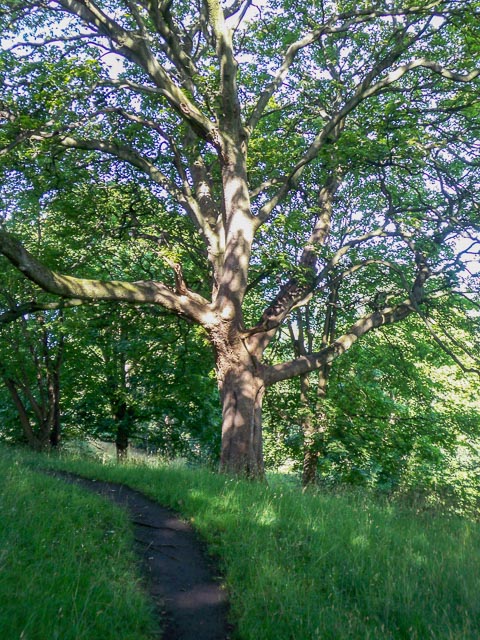
Kodak - 6.4mm - 39mm equiv.
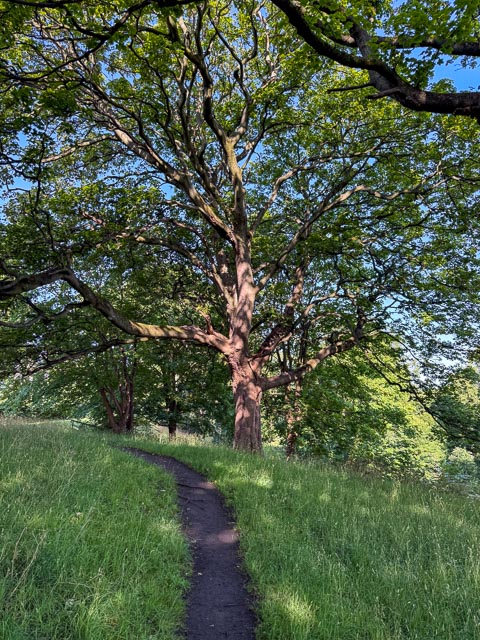
iPhone - 6.76mm - 24mm equiv.
Technically this one is a slam-dunk for the iPhone! The Kodak just didn't have any-where near the dynamic range to handle the dappled lighting here. But I have to admit I don't like the colours in the iPhone shot… there's something not quite right about the colour of the tree trunk in particular here. I think I have to give it to the iPhone, but only just. I can certainly see why someone who is specifically after the "vintage digicam" look might prefer the Kodak shot.
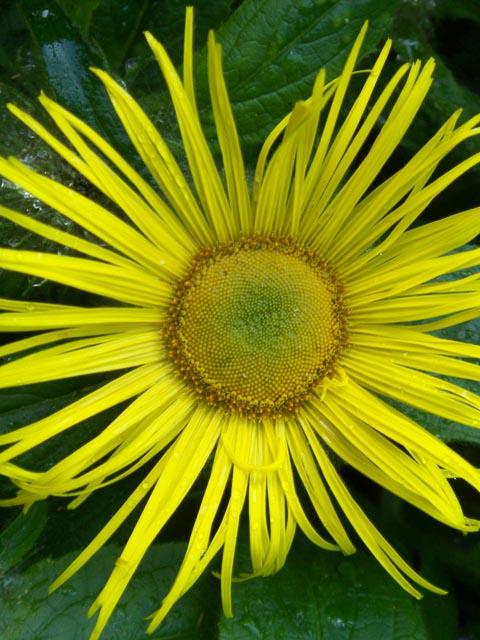
Kodak - 12.4mm - 76mm equiv.
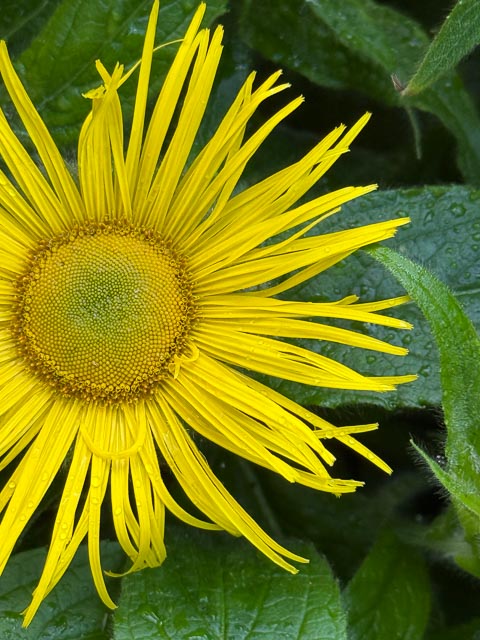
iPhone - 6.76mm - 121mm equiv.
Another slam-dunk for the iPhone! But this time not just technically… I think the iPhone has given a very pleasing result here; the combination of sharpness, focus and colours have produced a lovely image.

Kodak - 6.4 - 39mm equiv.
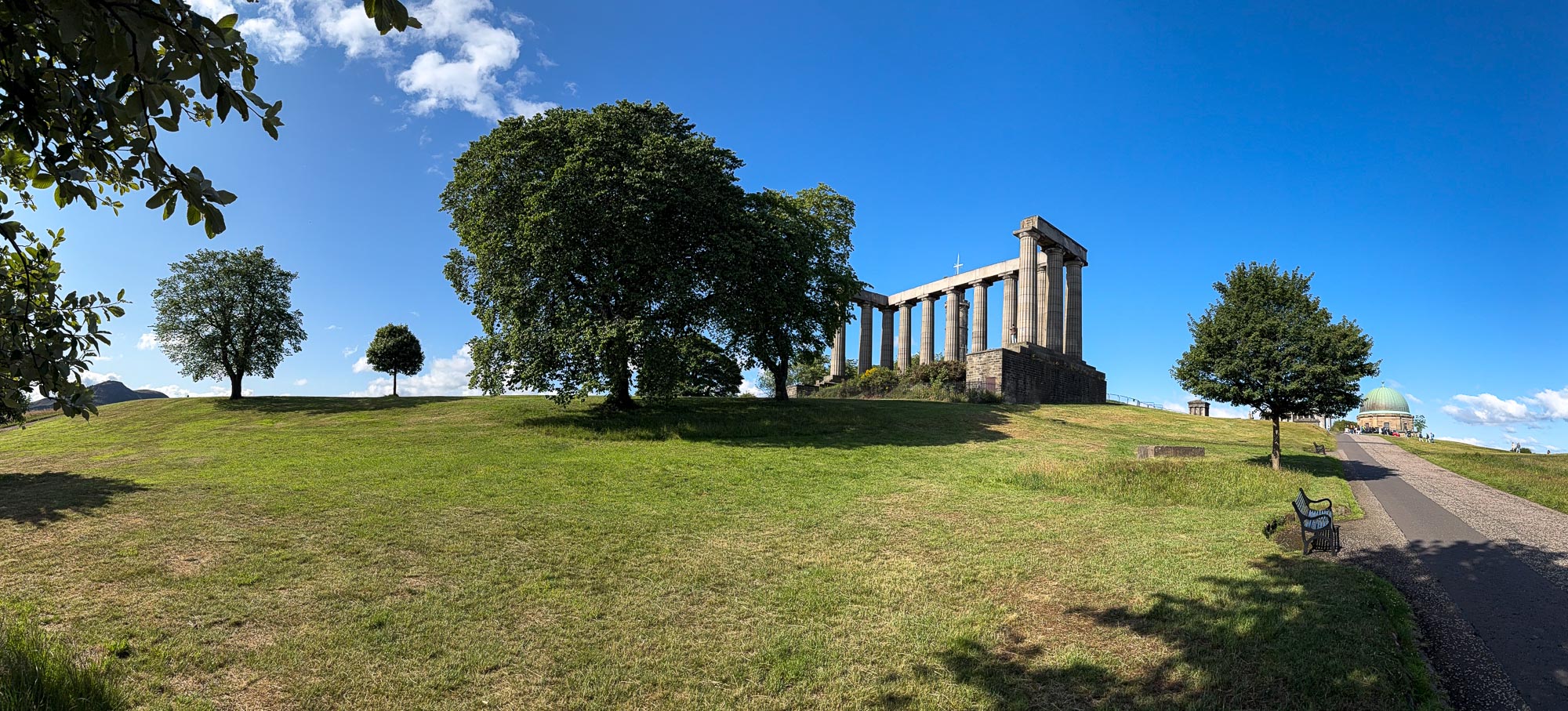
iPhone - 6.76mm - 24mm equiv.
So far it's not looking very good for the Kodak is it? Two where I'm giving it to the iPhone, albeit with some reservations that if I were in a different mood might have led me to favouring the Kodak, and one where the iPhone get's it without any reservations! So I thought I save this panorama for last is I think the Kodak get's the nod this time!
I prefer the colours of the Kodak shot here, and the fact that it's softer give a more 'organic' look than the (perhaps overly crisp) iPhone shot. And I also prefer the tighter composition of the Kodak shot. I could have zoomed out on the Kodak to get a wider field of view, and the iPhone does let you zoom in for panoramas, but because it forces you to hold your phone vertically while shooting panoramas it favours ulta wide fields of view for panoramas, and finding a tighter composition was bit tricky. The iPhone's much wider field of view is certainly very dramatic, but the geometry of this monument (the National Monument on Edinburgh's Calton Hill) just isn't right. It's subtly leaning in all sorts of wrong directions  .
.
So well done, Kodak… you got there in the end!
